No Car, Two Bikes, and Two Rad Kids
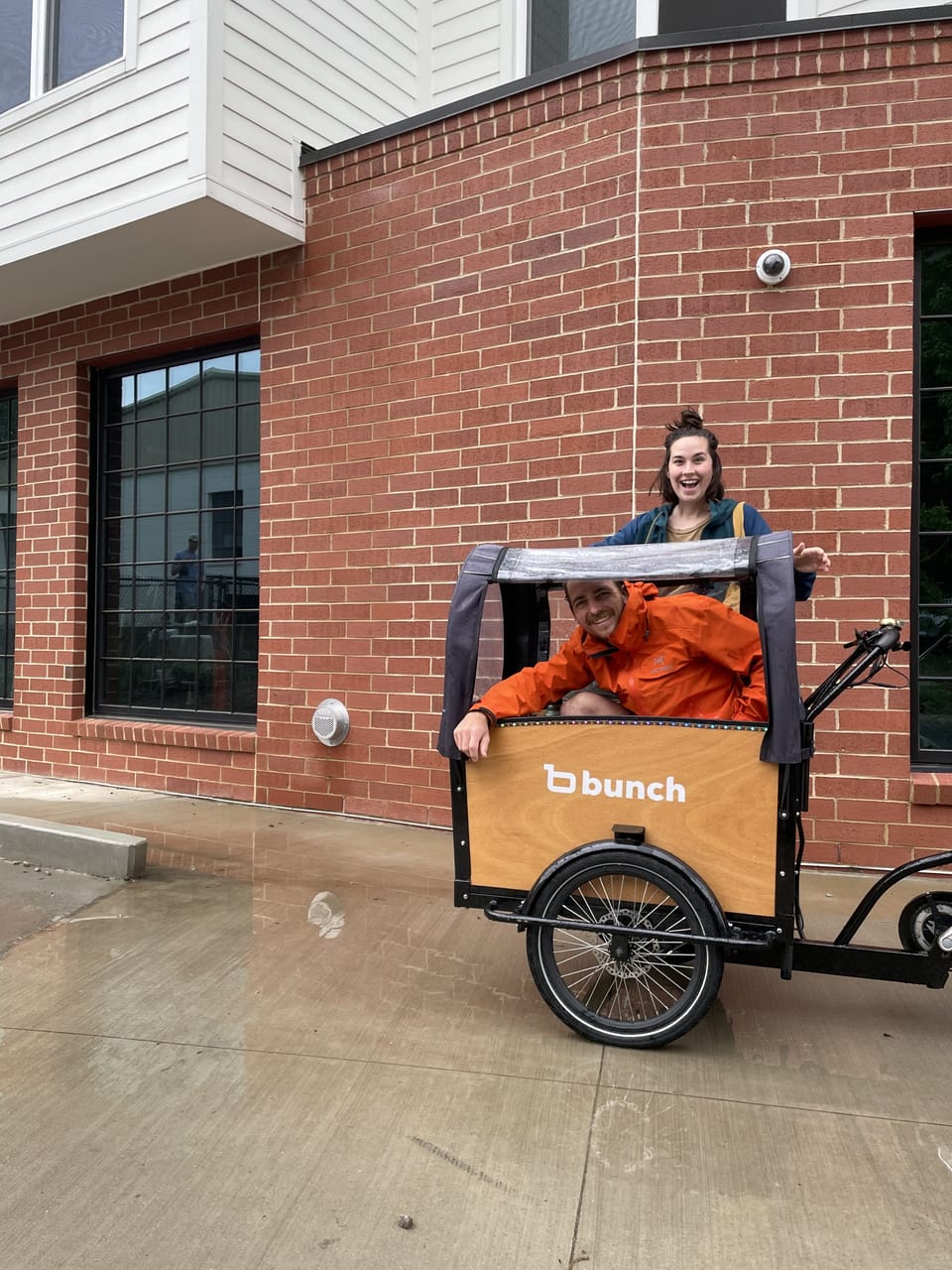
“Hold onto your butts!” Mark yells at Olivia as they reach the crest of Oakwood Ave at the abandoned St. Agnes Hospital and are about to begin their steep descent (IYKYK). Olivia giggles the entire way down as they reach mach-3 speeds, and the wind blows back their helmets. This is, in essence, an experience brought to them by the joy of cargo bikes. Mark rides a pre-2015 bright orange Larry vs Harry Bullitt (tapered headset be damned) and Annette pedals a three wheeled Bunch Bikes bakfiet (with rainbow lights, of course). Each has the carrying capacity of several hundred pounds and the ability to carry at least 2 kids, or one, brave grown adult. Annette has filled her bakfiet with hundreds of pounds of trees, plants and soil to supply her urban garden, and Mark has carried lumber, luggage and even other bikes on his cargo platform. Trips that most would see as requiring a truck was done with zero-emissions and powered by human locomotion.
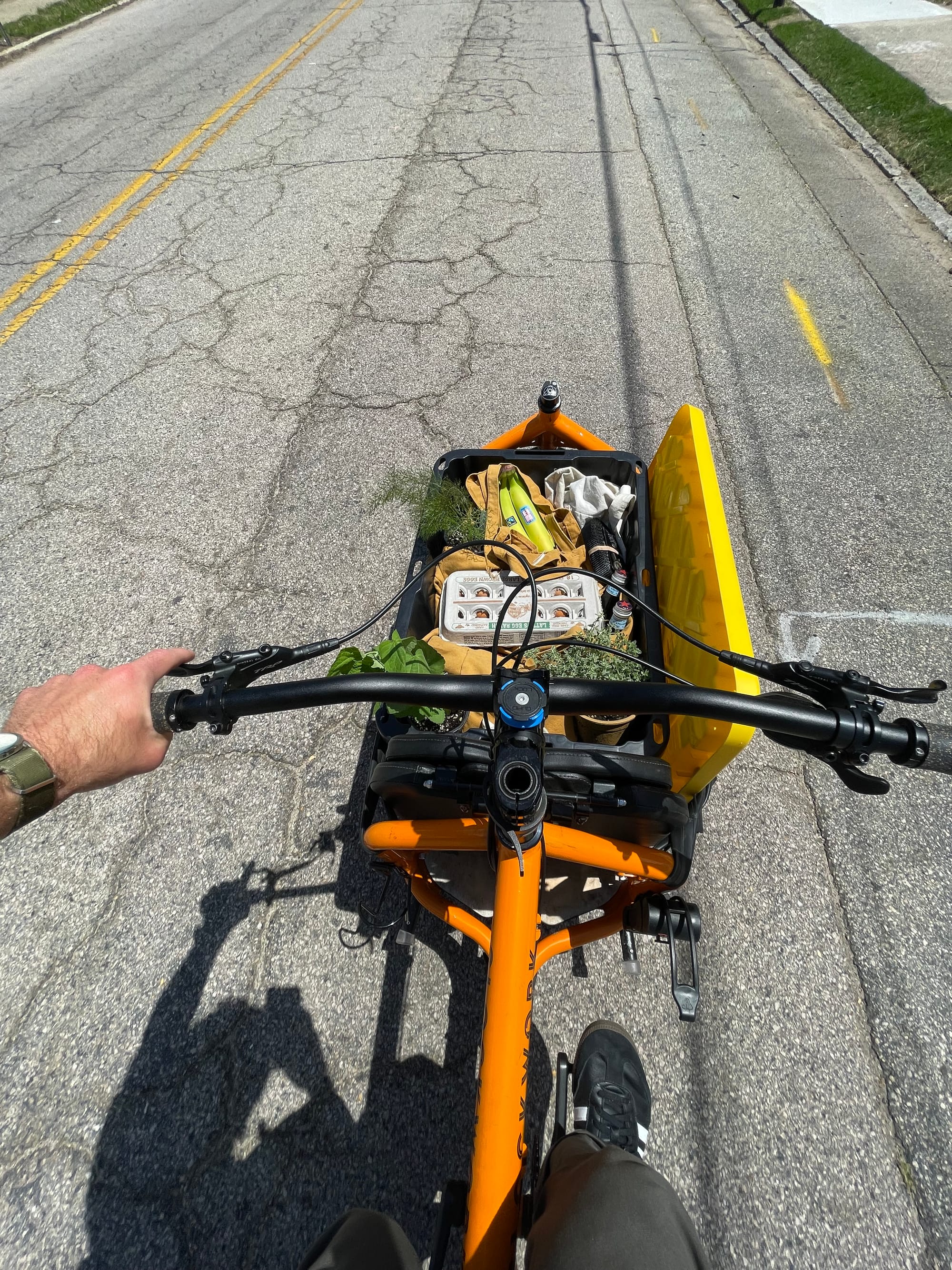


To disclaim and qualify the rest of the writing, all bikes are cargo bikes. Whether it’s a basket, a pannier, a backpack or even a musette, all bikes (and bicyclists) can carry cargo. For these purposes, at least, when we refer to cargo bikes, we are writing about bikes specifically designed to carry heavy and awkward cargo (humans included) over long distances.
So why cargo bikes? Well for that, we have to go way back. We both started driving and had our own cars nearly as soon as we turned 16. We drove everywhere in the small town where we grew up, we drove everywhere in the medium size town where we went to college and we drove everywhere in the city where we started a family. Hell, we even drove back and forth across the US while we lived in a school bus. We were the walking (driving) definition of car-brained. We never enjoyed driving, per se, but we never thought not driving was a real option. The roads are too busy, it’s too hot or it’s too wet, and what do we do with the kids? What if we need groceries or need to get our fifty pounds of library books (kids, amirite)? The answer nearly slapped us in the face when we first arrived in Copenhagen, Denmark.
It was late in the evening in the middle of winter when we landed at the Copenhagen International Airport. We gathered our luggage, walked to the metro stop (yes, inside the airport, it’s amazing) and rode the metro into the city, first above ground in the suburbs, then underground before we arrived in the city center (there’s another story here about the safety of the city, the efficiency of the transit system and the generosity of the Danish people, but we’ll save that for another time). We walked across the platform to the elevator to ride up and see the city for the first time. As we stepped out onto the main level plaza, bikes whizzed past in a dizzying array of organized chaos. Bikes carrying people, groceries, kids, even DHL with a load of parcels. For the first time, we witnessed a people-first city. Its infrastructure, architecture, markets and cafes were all designed to serve people, not cars. Cars were banished (mainly) to the outer rings of the city and the few arterial roads, albeit they still had dedicated bus lanes and separated bike paths. There were no unsightly gas stations or surface parking lots, dangerous motorists or honking horns. People of all abilities and ages felt safe to roam free through the plazas and paths, without fear that a vehicle with a distracted driver would cause mayhem. But most importantly, we noticed the Danish children. They were able to participate safely in everyday life, rather than being forced into a car seat, driven to their destination with nothing to see aside from the seat in front of them or the land/cityscape passing by at 25-65 miles an hour. They were able to engage in public life, build a mental map of their surroundings, interact with neighbors or friends and understand the rules of staying safe as a pedestrian and a bicyclist.
Cargo bikes allow kids to engage with their world much more effectively than if they were strapped in a car. A low, front-facing seat helps them build their mental map, memorizing every landmark and street sign, even seeing when different fruit bearing plants are ripe for picking. “Mama, can we stop to grab a fig off that tree?” is not uncommon to hear when riding a cargo bike with kids.
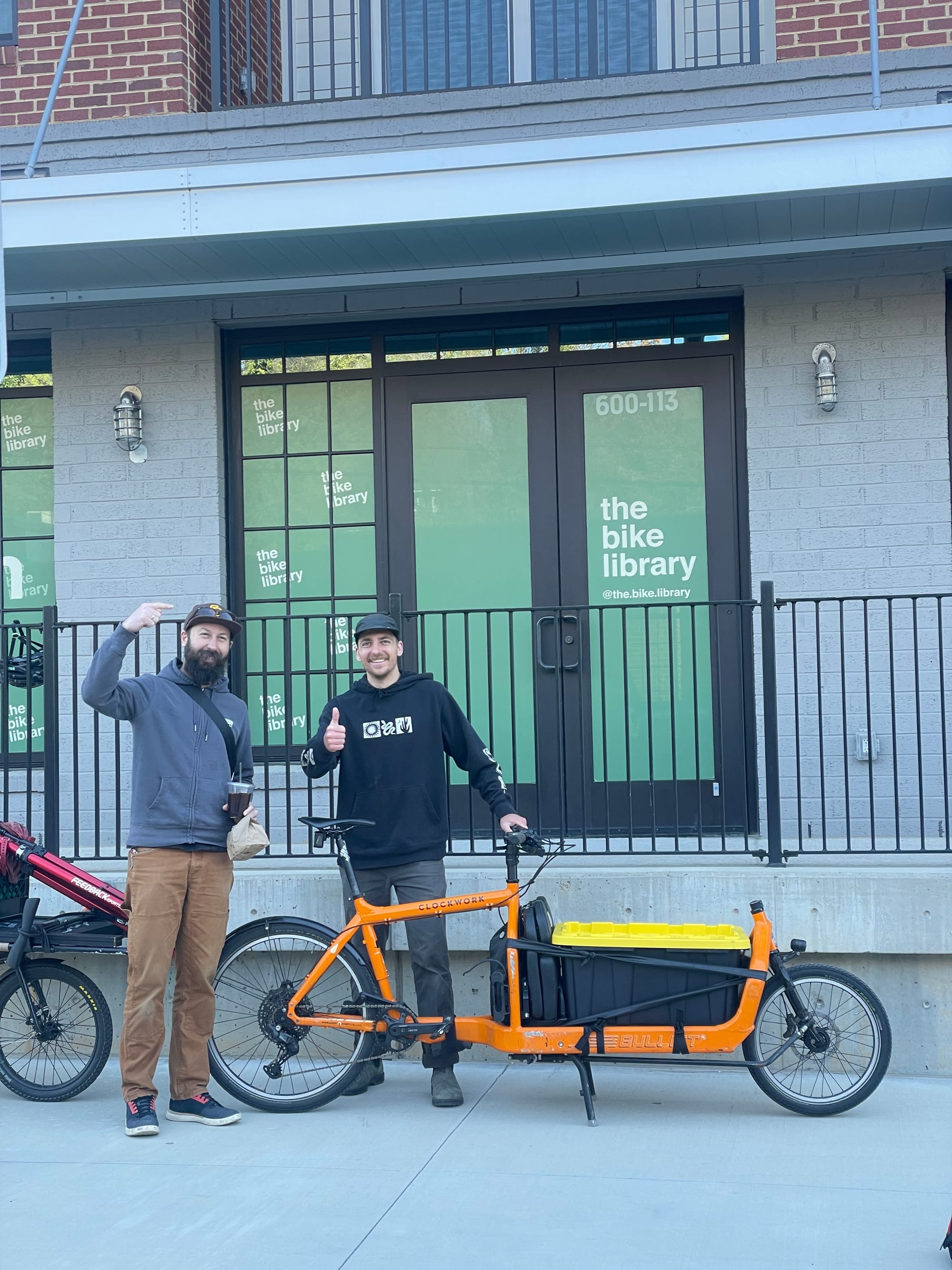
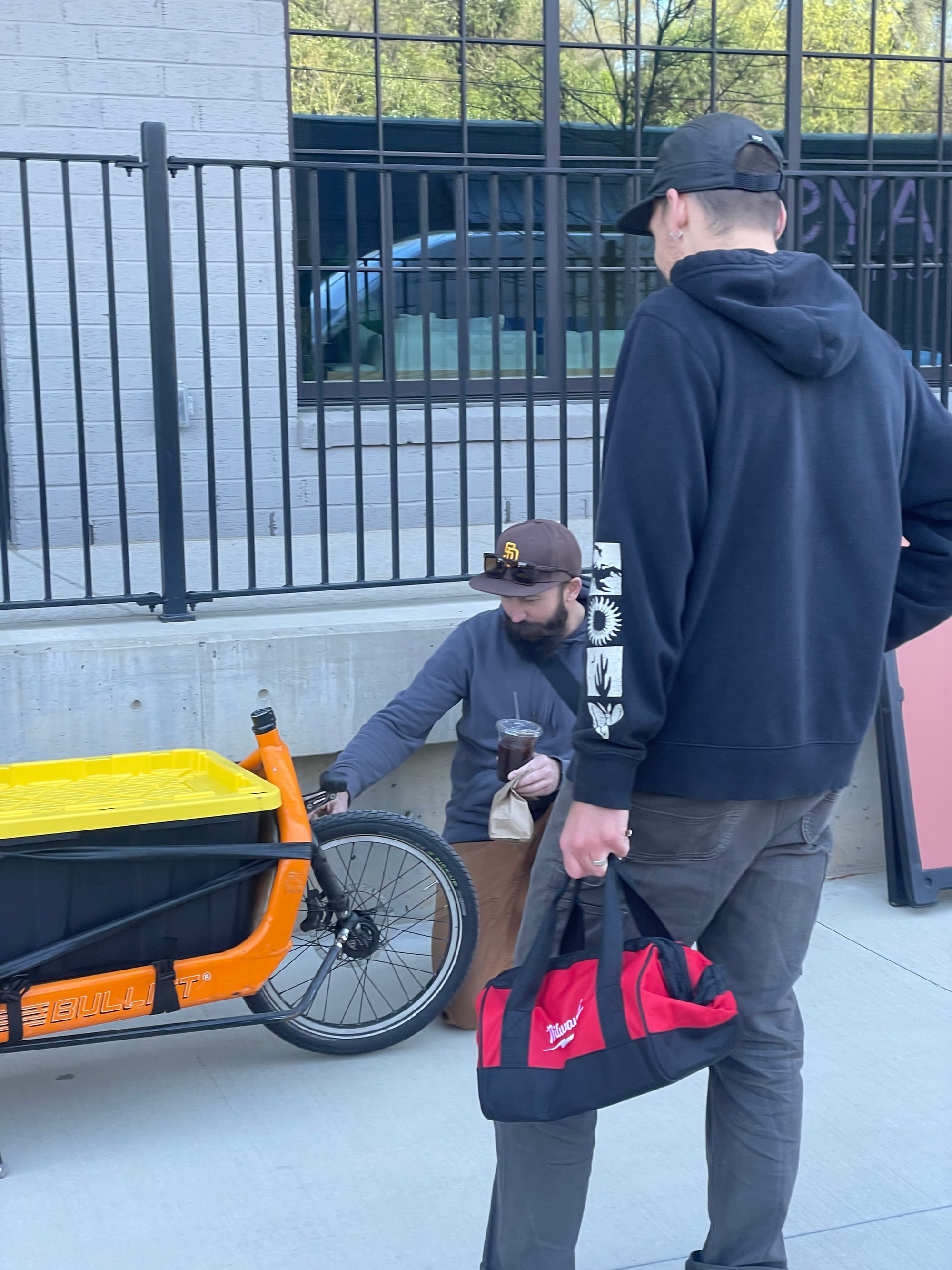
Editor's note: Brandon (left, dark gray hoodie) was the owner of THIS EXACT BIKE... two owners ago. He sold it to the woman who sold it to Mark. How wild! One morning, when Brandon was dropping off a few cargo bikes we ordered for The Bike Library, they happened to run into each other. Small world.
Copenhagen is not the only example of a people-first city. All four of us interact with neighbors, strangers, shop owners and even motorists every time we get on/in our bikes and pedal anywhere in Raleigh. People are excited to see folks on bikes that allow them to go about their lives without a car. If the distance is simply too far, we take a bus. There are very few times we can’t do what needs getting done with our bikes. Just as in Copenhagen, one could rent a bike trailer or small moving van in those scenarios (but, we’ve moved houses by bike, twice). Safe cities that put people and children first are quite simple. Consider the human’s needs before the 4,000 pound car’s. We want safer roads which means educating ourselves about safe infrastructure and demanding it. Copenhagen was not always the bike haven it is known for today. They’ve enjoyed their safety only since the 70’s when they demanded change. Even if you don’t love bikes as much as Mark, a safe city for bikes is a safe city for everyone. So, would we ever own a car again? Hell no. We hope to see more radical folks normalizing safe biking cities. Who knows? Maybe one day, we’ll be a bike haven too.
Give us a nice brash bell ring if you see us out and about, we’d love to meet you!
-- Annette and Mark


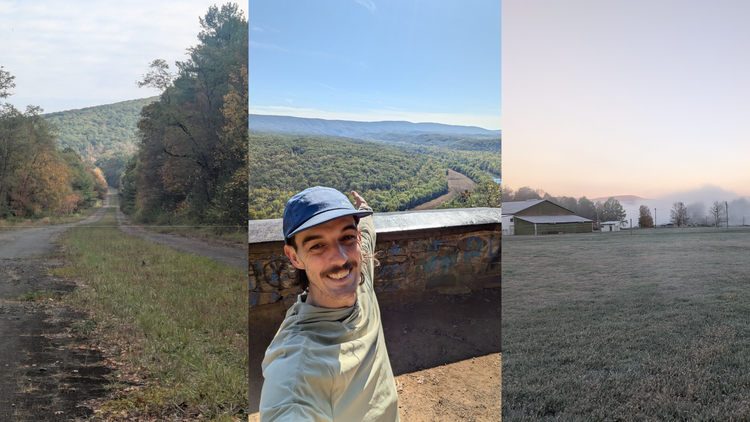
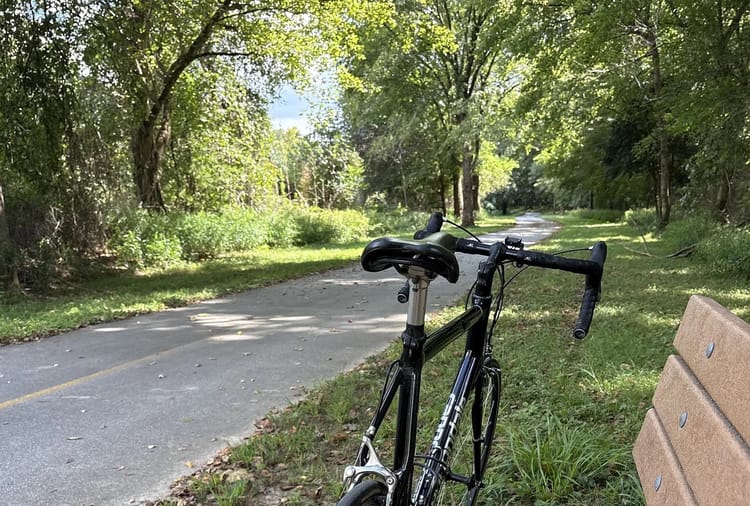

Comments ()